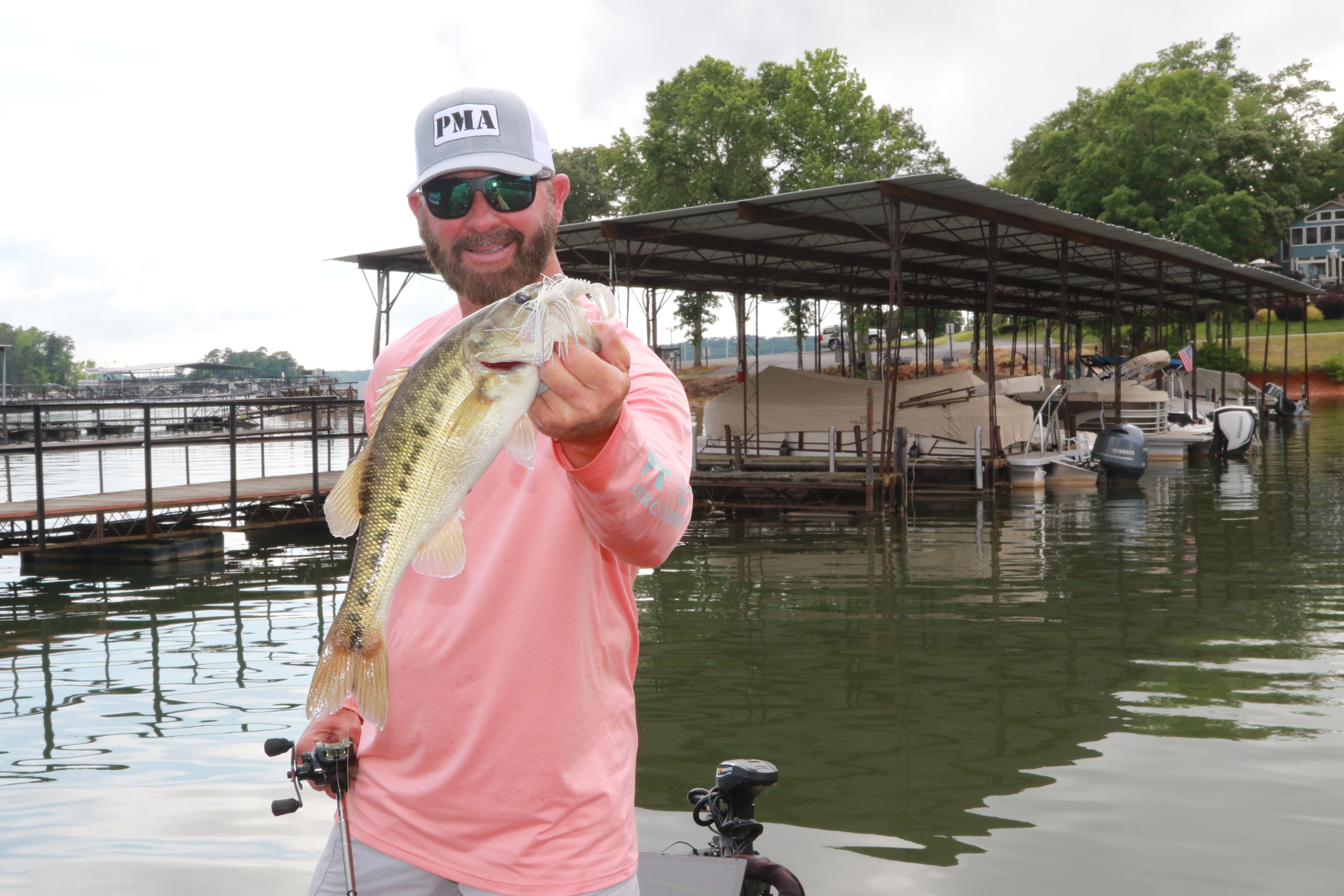
Caves, dark alleys, escape rooms — you suspect something intriguing could await therein, but for some, the unknown proves unnerving.
The same can be said for boat docks. Everyone knows bass inhabit these man-made structures, but their formidable forms often intimidate.
What if I snag the dock?
What if I can’t reach far enough under there?
What if the homeowner’s dog barks at me? (Stay in the boat and you’ll be fine.)
True, dock fishing requires a strategic approach and greater awareness than simply rolling down the bank and casting to vegetation. However, a little boldness goes a long way in learning one of bass fishing’s most promising scenarios.
No guts, no glory — right?
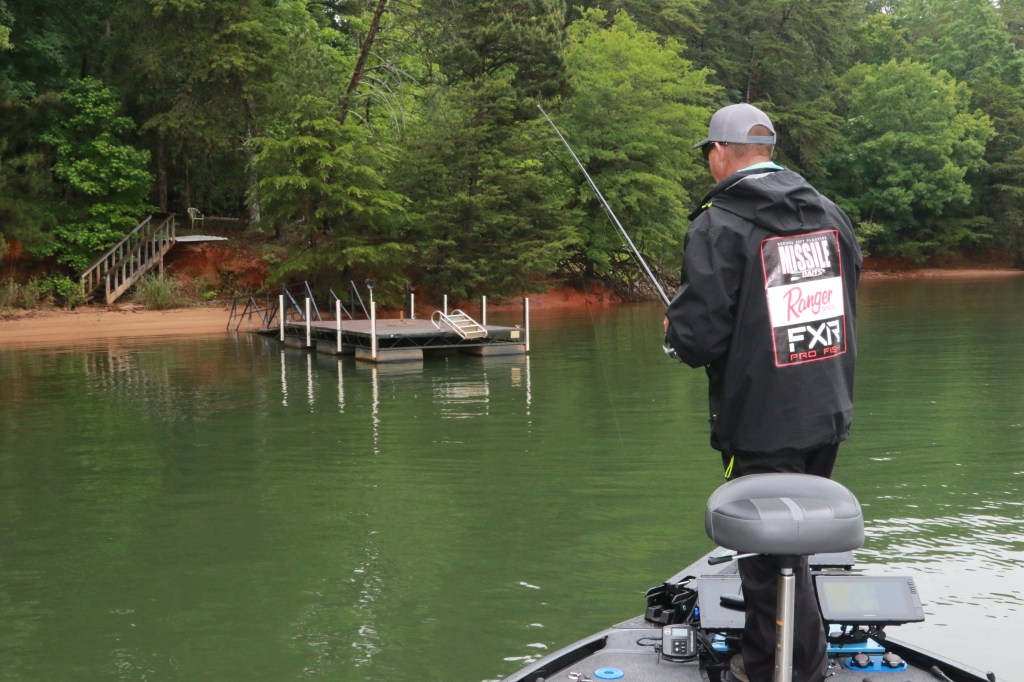
Start small
Elaborate structures with multiple design elements clearly present more “real estate” for bass to occupy. More space could mean more bass, but while smaller docks might hold fewer bass, it’s easier to find them.
As Bassmaster Elite Bryan Schmitt points out, anglers can more quickly pick apart a smaller, less complex dock. This efficiency allows you to spend more time focusing on key areas.
“I’m going to be able to cover a dock faster and put my bait in high-percentage spots,” Schmitt said. “I don’t have 50 options for where I can cast.
“For beginners, this makes for a very manageable approach. Your success goes way up because you’re going to be able to get your bait where it needs to go quicker.”
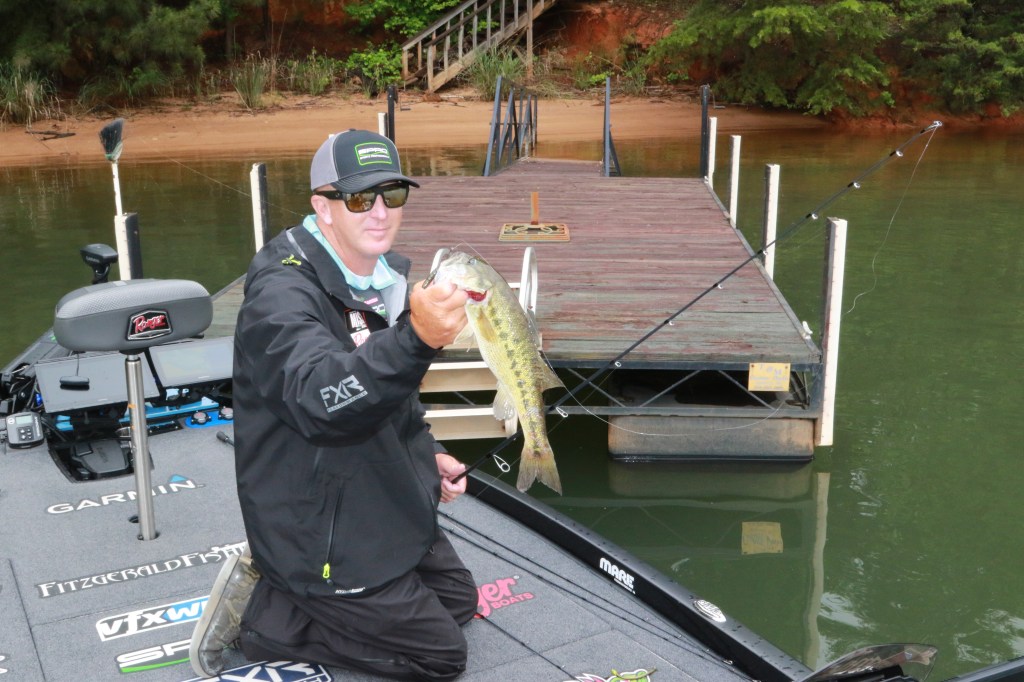
Key locations
Seasonal patterns play a big role in fish movement, but as Schmitt points out, you’ll almost always find several fish favoring the shorelines. While it’s true that multiple docks offer multiple opportunities, fewer choices concentrate the action.
In Schmitt’s experience, a lone dock in an otherwise barren area is money.
“You take a do-nothing bank and when the sun pops out, the fish want shade and if there’s no other form of structure but one isolated dock, it’s a magnet,” Schmitt said. “Your chances go through the roof.”
The best part about an isolated dock is that it offers an ideal practice target. Without the option of relocation, fish will hold their position. From an angler’s perspective, the lack of adjacent docks eliminates the temptation of bailing and keeps you focused on the target before you.
Call it muscle memory; a small, relatively simple dock with only a few key casts makes the ideal practice structure. As Schmitt explained, repeating the same cast multiple times helps you learn the force and angles necessary to hit those targets.
Once you master a handful of scenarios, you’ll find it easy to apply your repertoire to similar dock scenarios in other locations.
“These smaller isolated docks offer a good situation for learning how to fish docks,” Schmitt said. “Building confidence is big in fishing and this allows you to perfect certain casts. That’s important before you try to fish the larger, more challenging docks.”
Detail Notes: When sizing up a dock’s potential, one of the most important details is proximity to deep water. Creek channels, canals, or simply a deeper section of a pocket offer migration routes that keep docks replenished. Also, from extreme weather to fishing pressure, depth offers fish a secure fallback zone.
Elite veteran Gerald Swindle adds this: “If all else fails and you’re not sure what the fish are doing, fish docks on points. Those are always high-percentage areas.”
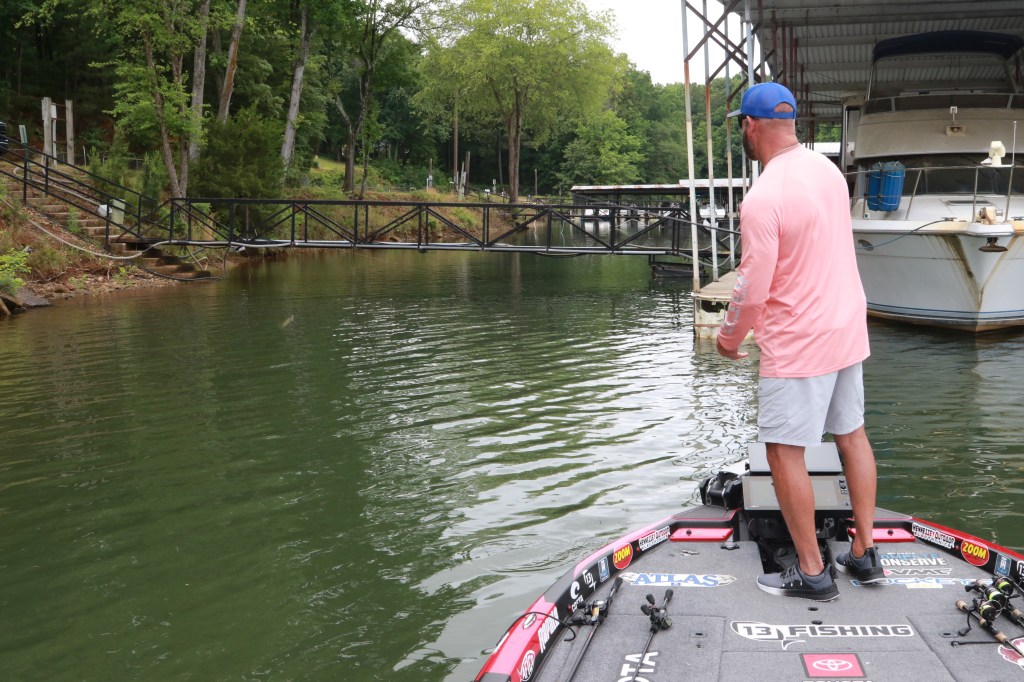
When it’s right
Considering that the No. 1 dock benefit is shade, it’s easy to understand when and how the fish will position. Simply put, sunny conditions push the fish under the overhead cover, while dimmer scenarios — early morning, late afternoon, cloudy skies — allow them to roam.
Docks remain in play even when the sunlight’s less intense, but you’ll want to fish the outer edges and the perimeters. Conversely, bright, sunny days find fish tucked deeply into the shadow realm.
“Treat it like an umbrella,” Schmitt said of the dock’s bass appeal. “They want shade.
“I’ve seen a cloudy day turn into a sunny day and you go back to some docks that you fished during the cloudy times and, after it’s been sunny for 30 minutes, you catch them on every dock.”
Time of day also factors into your targeting and that’s largely due to shade lines. While the midday sun’s overhead position finds all the shade under the dock, mornings and afternoons bring varying angles, which extend and contract the shade lines and ultimately move them from one side to the other.
Sun on the dock’s right side means shade on the left and vice versa. Remember, the dock itself is the main attraction, but bass and the forage they seek will use extending shadows as cover. Pay attention to light/dark dynamics and fish where the fish are.
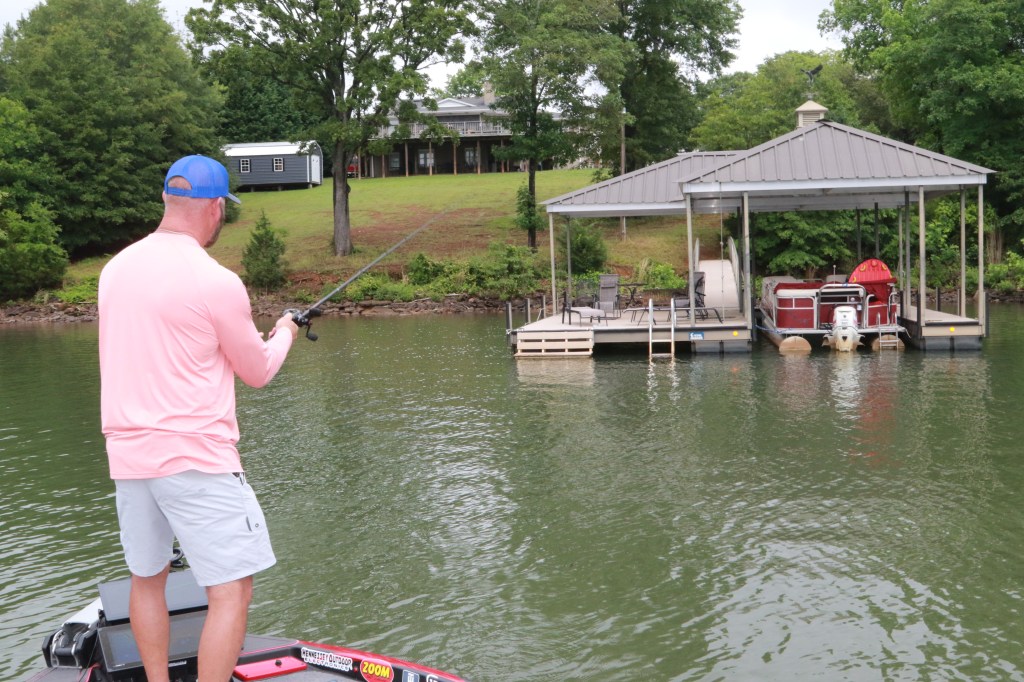
Find your range
Swindle’s a straight-up dock fishing ace and, in his view, nothing will make or break your experience more than proper positioning.
“A common mistake people make is they want to stay too far away from the dock and then they want to get too close,” Swindle said. “There’s a happy medium. The closer you get to a dock, the less room you have to work so the cast has to be precise.
“The farther out you are, you’re going to end up trying to throw too hard and that’s when you’re going to backlash. So find your comfort zone where your normal cast would be and start there.”
Swindle offers a couple more wisdom points:
Pick Your Targets: “Don’t start too small. Pick (a spot on the dock) that you can hit, then as you gain confidence, move up.”
Eye to Hand Coordination: “I always tell people, ‘Keep your eyes where you want your bait to go. Don’t watch your rod, don’t watch how much line you have out; watch where you want your bait to go.’
“When you end that cast, your rod tip needs to be pointing where you want that bait to go. It’s going to help the line stay straight and come off your reel smoothly.”
Patience Pays: “Get a comfortable distance, select a bigger target, and take your time. Don’t rush the shot.”

Best baits
Schmitt’s Elite-level dock arsenal is understandably complex, but one of his personal favorites — the wacky rig — offers a highly effective option that’s easy to learn and fish. In its simplest form, the wacky rig comprises a soft plastic stick worm with a short shank finesse hook set through the center.
This fulcrum arrangement makes the wacky rig easy to cast while causing both ends to wiggle in the water. For a faster fall and more of a head-first motion, convert your wacky rig into a Neko rig by inserting the hook about 1/3 the distance from the head and sticking a nail weight into the bait’s nose.
(Technically, a Neko rig finds the hook inserted parallel with the worm, as opposed to the wacky rig’s perpendicular placement.)
Complementing the wacky/Neko rigs, a shaky head with a finesse worm and a standard Texas-rigged worm or creature bait allow you to target particular dock posts, swim ladders, or the inside corners of boat slips.
Other beginner-friendly options include a crankbait, bladed jig, and a spinnerbait. All of these are effective tools for tracing a dock’s front edge and sides. For this cast-and-wind presentation, Schmitt adds a light ball head jig with a 3.5- or 4.5-inch Missile Baits Shockwave swimbait.
“Just bring these baits down the sides of these docks and you can bring some fish out that way, as well,” Schmitt said.
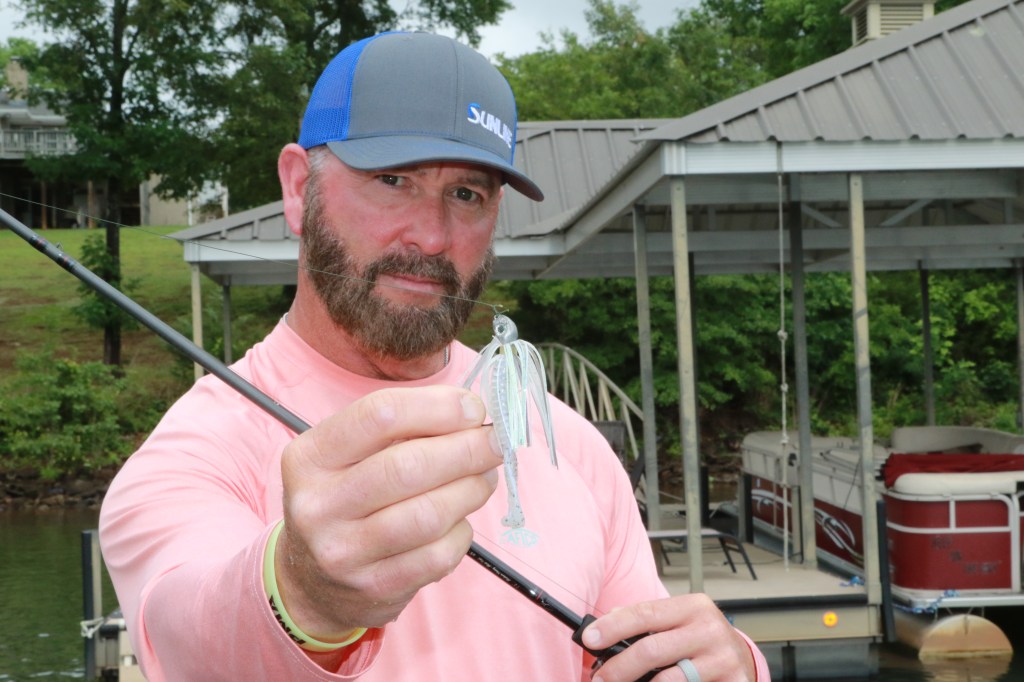
Swindle adds his 3/8-ounce Buckeye Lures swim jig with a Zoom Z-Craw Jr. trailer to the list of dock baits. With this straightforward bait, he can cast and retrieve past particular dock points, or skip beneath the cover to reach bass holding deep in the shadows.
With floating docks sitting over deep water, Swindle said a big swimbait or glide bait is a good tool to make a fish show itself. During the pre-spawn staging and later in the year, when fish spend much of their day in dock shade, they might follow a 6- to 8-inch swimbait for several feet.
Ideally, an effective retrieve will convince the fish to bite, but even if they don’t, noting where they’re coming from gives you a target for follow-up casts. Once the fish breaks off the pursuit and swims back to the dock cover, quickly pitch a wacky-rigged worm, or a smaller swimbait (3- to 4-inch) toward the spot to which they return.
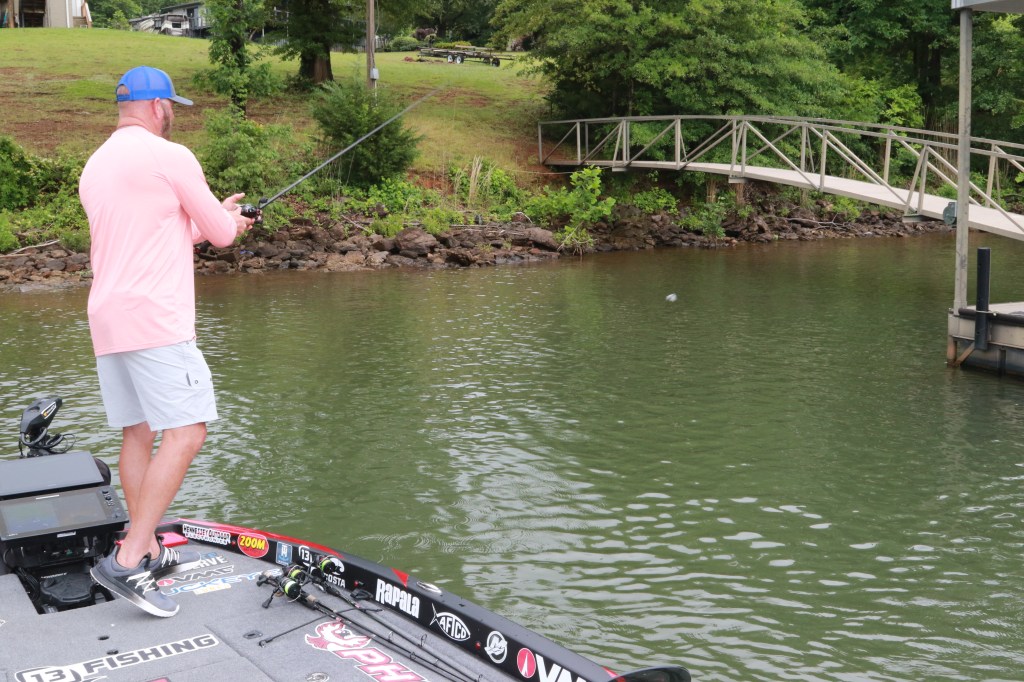
Practice, practice, practice
Whatever bait or presentation you prefer, the impact of repetition cannot be overstated. Even off the water, folding tables or large storage containers arranged to replicate a dock offers a helpful practice scenario. (Pool floats also fit this plan.) Pay attention to your rod angles and what bait sizes and shapes are easiest for you to cast.
Just like batting, free throws, or hurdling — put in the practice and you’ll be better at the live action.




